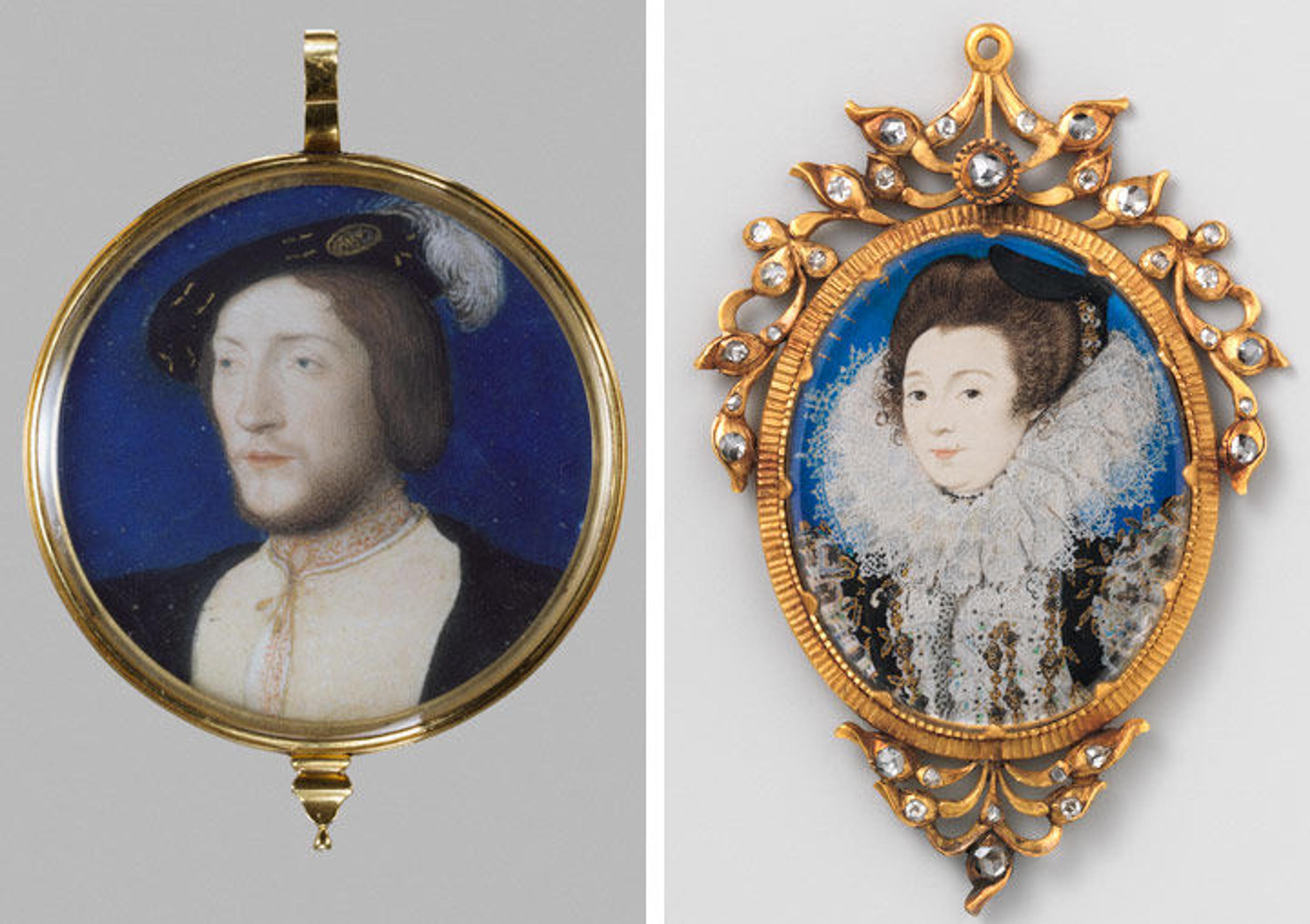
Left: Fig. 1. Jean Clouet (French, 1516–1540/41). Charles de Cossé, Count of Brissac, ca. 1535. Vellum; diameter 1 1/2 in. (37 mm). The Metropolitan Museum of Art, New York, Fletcher Fund, 1935 (35.89.1). Right: Fig. 2. Nicholas Hilliard (British, ca. 1547–1619). Portrait of a Woman, 1597. Vellum; oval, 1 7/8 x 1 1/2 in. (47 x 39 mm). The Metropolitan Museum of Art, New York, Fletcher Fund, 1935 (35.89.2)
«During spring 2016, I participated in a one-month exchange program between the Victoria and Albert Museum and The Metropolitan Museum of Art to study portrait miniatures in The Met's collection of European paintings. The world of miniatures is complex, involving not only the painted surfaces but also the lockets or cases that house them. The housings can be ornate or simple, made from ivory or metals (precious and otherwise), and are sometimes bejeweled (figs. 1, 2); some may have (or once have had) lids. Not all of the housings are contemporaneous with their portraits; some of the original cases were replaced in later times.»
From the contents of the toolbox I use in my work (fig. 3), you may think that my profession leans more towards that of dentistry or woodworking than conservation. As a conservator, I often need to open the housings for a task as basic as cleaning the glass or for more involved treatments such as fixing flaking pigments. Releasing the miniatures from their cases can prove to be challenging. The lockets may be held together by small pins that must be replaced once removed.

Fig. 3. A small selection of tools for conserving portrait miniatures. © Victoria & Albert Museum, London
Conservators may use a variety of tools, including razor blades to open some locket types and copper wire to remake the pins that secure the locket parts back together again. Before I can use the copper wire, I must file it down to the appropriate size and shape, using a pin vice to hold it firmly in place. I then use a flat top cutter to get close enough to the locket edge so as to cut the pin and limit its length and grain tools to smooth and flatten the new pin. To reseal the miniature to the glass cover, I use a goldbeaters' skin, which is so called because goldbeaters laid them between leaves of metal while beating them into leaf. The goldbeaters' skin is historically made from the outer membrane of ox intestine and coated with a size to make them sticky when damp.
Before attempting to open a miniature, conservators investigate how the locket or case is put together. This is not always obvious. Opening miniatures is by far the most heart-stopping process of my work. It takes not only experience but also confidence to get a miniature out of its snug home. It is important to document how each piece comes apart so we know how to put them back together again.
Editor's Note: A lengthier version of this blog post originally served as part of a three-post series published on the Victoria and Albert Museum's blog.
Related Link
Now at The Met: "The Complex World of Small Things: Hands That Make, Hold, and Mend" (May 23, 2016)